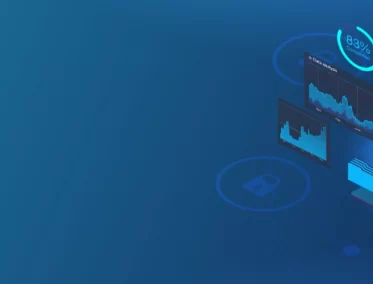Key Takeaways
- A future-ready JD Edwards Chart of Accounts (CoA) supports compliant, real-time financial reporting across global entities.
- Standardization, scalability, and multi-dimensional design are foundational to improved JD Edwards financial reporting.
- Common pitfalls include inconsistent structures and over-customization, which hinder automation and consolidation.
- JD Edwards tools like One View Reporting, Orchestrator, and multiple ledger types are powerful enablers of smart reporting.
- A well-designed CoA also supports compliance across multiple financial reporting standards and local mandates for global operations.
- For organizations in regulated sectors, CoA optimization is a crucial step for audit-readiness and ERP efficiency.
|
For JD Edwards (JDE) users, the evolution where enterprises are being pushed to rethink their financial reporting structures hinges on one core pillar: the Chart of Accounts (CoA). A flexible, scalable, and future-ready CoA structure is essential for enabling real-time, accurate, and compliant JD Edwards financial reporting, particularly for organizations operating across multiple entities and global regions.
This blog explores the key principles and best practices for modernizing your JD Edwards CoA to support robust financial reporting at scale, without compromising on control, governance, or performance.
Why Modernize Your JD Edwards Chart of Accounts?
The legacy CoA design in JD Edwards may have been sufficient for single-entity, regional operations. However, for multinational businesses or those expanding into new markets, the conventional account structures quickly become a bottleneck.
Some key triggers for CoA transformation include:
- Multi-entity complexity: Businesses operating across several subsidiaries, geographies, or business units struggle with consolidations and reconciliations.
- Global compliance: Evolving international accounting standards demand structured reporting across legal jurisdictions.
- M&A activity: Mergers or acquisitions introduce incompatible chart structures, requiring harmonization across the enterprise.
- Digital transformation: Enterprises embracing analytics, AI, and automation need standardized and well-tagged data to drive JD Edwards financial reporting performance.
Studies reveal that automated consolidation is a game-changer. Finance pros using tools designed for multi-entity accounting have been able to simplify their close process and trust their consolidated reports.
Key Attributes of a Future-Ready JD Edwards CoA
To support agile, real-time, and multi-dimensional JD Edwards financial reporting, your CoA should incorporate the following traits:
- Standardization Across Entities
Your CoA should follow a consistent structure and coding logic across all business units and geographies. This eliminates data silos, reduces reporting errors, and simplifies consolidation.
Tip: Use standard segment positions (e.g., company, cost center, product, location) across all business units, even if some segments are unused in certain subsidiaries.
- Scalability
A well-designed CoA should allow room for business expansion without frequent rework. Whether it’s a new market, product line, or legal entity, your account structure should scale seamlessly.
- Multi-dimensional Reporting Support
Design your CoA to accommodate reporting needs across multiple dimensions: legal, managerial, tax, and operational. JD Edwards provides powerful reporting tools like One View Reporting, Smart View, and Financial Integrity Reports, all of which benefit from structured account hierarchies. Use advanced segmenting (location, department, function, project) to empower slicing and dicing of financial data within JD Edwards.
- Localization and Globalization
Global organizations must meet local tax, audit, and statutory requirements while also consolidating globally. A well-architected CoA in JD Edwards can support dual reporting through separate ledger types and flexible account structures.
- Integration with Enterprise Data Strategy
A future-proof CoA serves as the foundation for downstream processes, such as AI-driven forecasting, financial close automation, and analytics platforms. Clean, consistent CoA data improves the output of JD Edwards BI and external tools like Tableau, Power BI, or Oracle Analytics Cloud.
Common Pitfalls in CoA Design for JDE Users
Before jumping into a redesign, it’s crucial to be aware of the most common issues in legacy CoA implementations:
- Overuse of custom segments: Leads to confusion and slows down reporting logic.
- Inconsistent segment lengths: Makes integrations and automation more error-prone.
- Manual data reconciliation: Increases the risk of duplicate entries and compliance gaps.
- Hard-coded reporting logic: Ties reports to rigid account numbers, limiting agility.
These bottlenecks often arise from short-term decisions made during ERP go-lives. As JD Edwards continues to support innovation through tools like Orchestrator and UX One, organizations must ensure that their underlying data structures, particularly the CoA, are not left behind.
Steps to Redesign Your JD Edwards CoA for Global and Multi-Entity Reporting
Step 1: Assess Current CoA Complexity
Start with an audit of your existing account structure. Identify inconsistencies, unused segments, and redundancies. Look for excessive reliance on alternate accounts or mapping logic.
Step 2: Define Reporting Requirements
Engage finance, tax, compliance, and business stakeholders to gather global and local reporting needs. Define what information needs to be captured at each level (entity, region, department, etc.).
Step 3: Design a Unified Segment Structure
Create a future-ready CoA model with fixed-length segments and a logical flow (e.g., Entity > Function > Department > Account > Product). JD Edwards allows up to 25-character account numbers with 10-digit object and 6-digit subsidiary fields, so plan accordingly.
Step 4: Leverage JD Edwards Tools
Use JDE’s Chart of Accounts Setup, Account Master, and Category Codes to structure and maintain your new CoA. Ensure proper use of ledger types and reporting codes for legal and managerial views.
Step 5: Simulate & Validate
Run mock reports across multiple entities and currencies to ensure consistency, completeness, and reconciliation readiness. Validate that JD Edwards financial reporting outputs are aligned with real-world use cases.
Step 6: Train & Rollout
Educate users on the new CoA structure. Adjust reporting templates, integration points, and testing protocols to align with the revised setup.
JD Edwards Financial Reporting: Best Practices for Long-Term Value
A modern CoA is the engine behind accurate and timely JD Edwards financial reporting. Beyond structural changes, enterprises should also adopt ongoing governance and automation practices:
- Create a centralized CoA governance team to approve changes and ensure alignment.
- Use JDE Orchestrator to automate validations, error checks, and segment updates.
- Integrate with planning tools like Hyperion or Oracle EPM to drive budgeting and forecasting.
- Adopt reusable report templates across entities to promote reporting consistency.
- Continuously audit financial data integrity using tools like Integrity Reports and Account Ledger Detail Analysis.
How JD Edwards Helps in Achieving Financial Reporting Maturity
JD Edwards is uniquely equipped to support global, multi-entity financial reporting due to features like:
| Feature |
Benefit |
| Multi-ledger System |
Supports parallel financial reporting across multiple accounting and statutory requirements |
| One View Reporting |
Allow end users to self-serve reports |
| Currency Management |
Accurate, real-time conversions |
| Flexible Chart Segmentation |
Enable detailed operational and managerial insights |
| Orchestrator & UX One |
Support automation and real-time updates |
By aligning your CoA strategy with these capabilities, you can unlock the full value of JD Edwards financial reporting and future-proof your ERP environment.
As regulatory pressure intensifies and businesses expand across geographies, the need for unified, scalable, and transparent financial reporting has never been greater. JD Edwards remains a powerful ERP system, especially when its backbone, the Chart of Accounts, is optimized to meet modern requirements.
Future-proofing your JD Edwards financial reporting begins with a scalable, regulation-ready Chart of Accounts structure. Especially in highly regulated sectors, like manufacturing, energy, and life sciences, getting your CoA right isn’t just about reporting flexibility; it’s about compliance, auditability, and long-term ERP efficiency. If your business operates in such sectors, you may find deeper insights in our detailed guide on optimizing JD Edwards Chart of Accounts for compliance and audit success.

FAQs
Q1. Why is a standardized CoA important in JD Edwards financial reporting?
It improves accuracy, simplifies consolidations, and allows consistent reporting across entities.
Q2. Can JD Edwards handle multiple accounting standards?
Yes. JD Edwards can be configured to support multiple financial reporting standards and local statutory requirements.
Q3. What tools in JD Edwards support financial reporting?
JD Edwards supports financial reporting through tools such as One View Reporting, Financial Report Writer, Smart View, and Orchestrator (for automating data updates and workflows).
Q4. How often should I reassess my JD Edwards CoA structure?
It’s recommended to audit your CoA annually or during any major business transformation (e.g., mergers, expansion).
Q5. What industries benefit most from CoA optimization?
Highly regulated sectors like manufacturing, pharmaceuticals, energy, and financial services.




